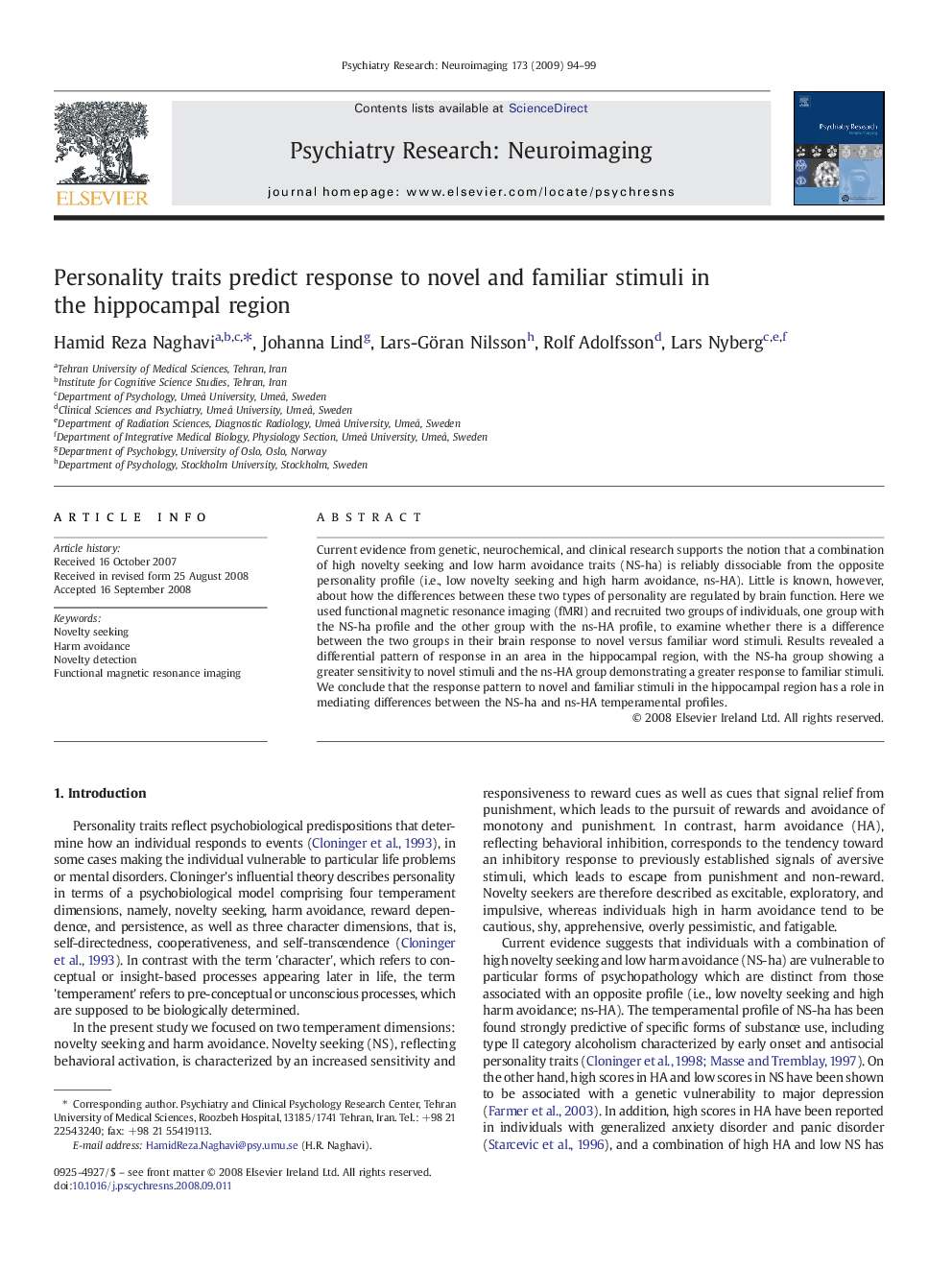| Article ID | Journal | Published Year | Pages | File Type |
|---|---|---|---|---|
| 334849 | Psychiatry Research: Neuroimaging | 2009 | 6 Pages |
Current evidence from genetic, neurochemical, and clinical research supports the notion that a combination of high novelty seeking and low harm avoidance traits (NS-ha) is reliably dissociable from the opposite personality profile (i.e., low novelty seeking and high harm avoidance, ns-HA). Little is known, however, about how the differences between these two types of personality are regulated by brain function. Here we used functional magnetic resonance imaging (fMRI) and recruited two groups of individuals, one group with the NS-ha profile and the other group with the ns-HA profile, to examine whether there is a difference between the two groups in their brain response to novel versus familiar word stimuli. Results revealed a differential pattern of response in an area in the hippocampal region, with the NS-ha group showing a greater sensitivity to novel stimuli and the ns-HA group demonstrating a greater response to familiar stimuli. We conclude that the response pattern to novel and familiar stimuli in the hippocampal region has a role in mediating differences between the NS-ha and ns-HA temperamental profiles.
